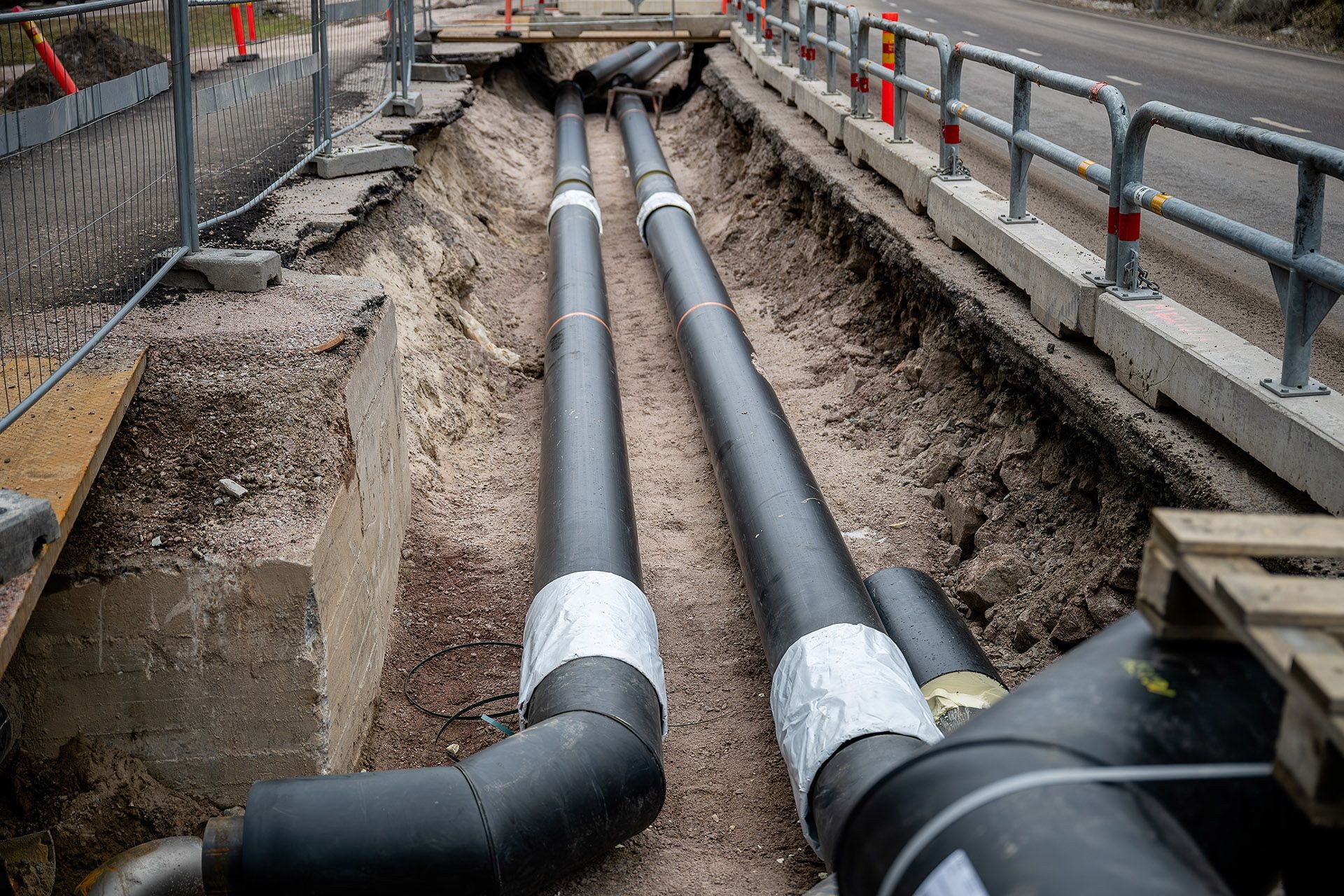
Below the surface: digitalizing underground utility management


Hong Kong, home to 7.5 million people, has a complex network of underground utilities (UU) beneath its 2,238 kilometers of public roads, supporting essential services such as water, electricity, gas, drainage, sewerage and telecommunications. Each year, countless routine street excavations to install and maintain this infrastructure are hindered by a lack of accurate and accessible location information.
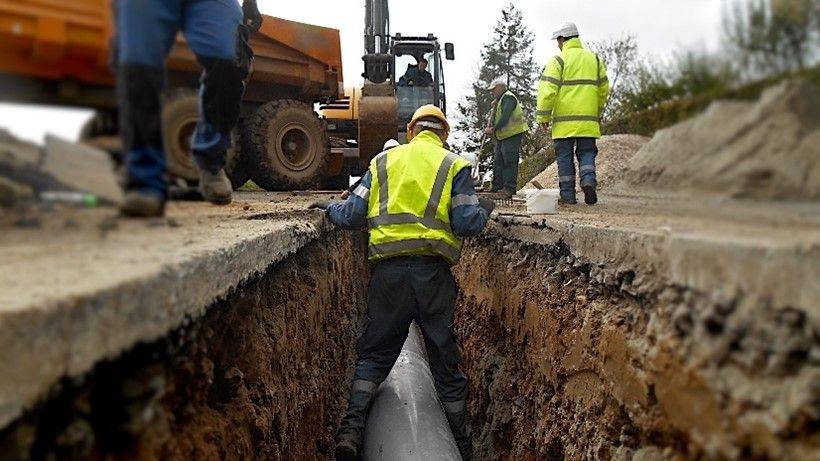
With around 20 major utility stakeholders frequently carrying out road excavation works to install and maintain Hong Kong’s UU, projects can often be delayed for days or even weeks as additional time is required to locate buried utilities and plan works safely. In large-scale construction projects, the absence of properly recorded or mapped utility data can lead to even more severe consequences. For instance, unexpected obstructions during foundation or drainage works can incur months-long delays, costly variation orders, and substantial claims for project overruns. Such risks and delays could have been prevented if accurate, comprehensive UU information had been available in the planning and design stage.
UUIS: A smart solution to map Hong Kong’s hidden depths
As part of a broader initiative to explore the transformative impact of digital technologies on infrastructure planning and management, the Lands Department tasked AECOM with developing a centralized geospatial platform to collect and share the locations of Hong Kong’s UU: the Underground Utilities Information System (UUIS).
Leveraging advanced Geographic Information Systems (GIS), including digital twins for 3D spatial data visualization, the UUIS is redefining how road excavation works are managed and executed. The groundbreaking tool offers significant advantages in managing UU, enabling smarter, safer, and more efficient underground development.

Connecting stakeholders for shared insights and aligned designs
At its core, the UUIS is a web-based platform that consolidates and shares UU data among stakeholders, streamlining the planning and execution of underground works. This one-stop platform not only integrates the collection, updating, storage and dissemination of data from various utility stakeholders, but also offers tools and applications to optimize utility alignment design.
UU stakeholders contribute their spatial data to the UUIS at agreed intervals — typically every three to six months. Submitted data is validated, converted, and published to the platform through a dedicated data conversion engine. Authorized users can then access the system to view this information in both 2D maps and 3D scenes.
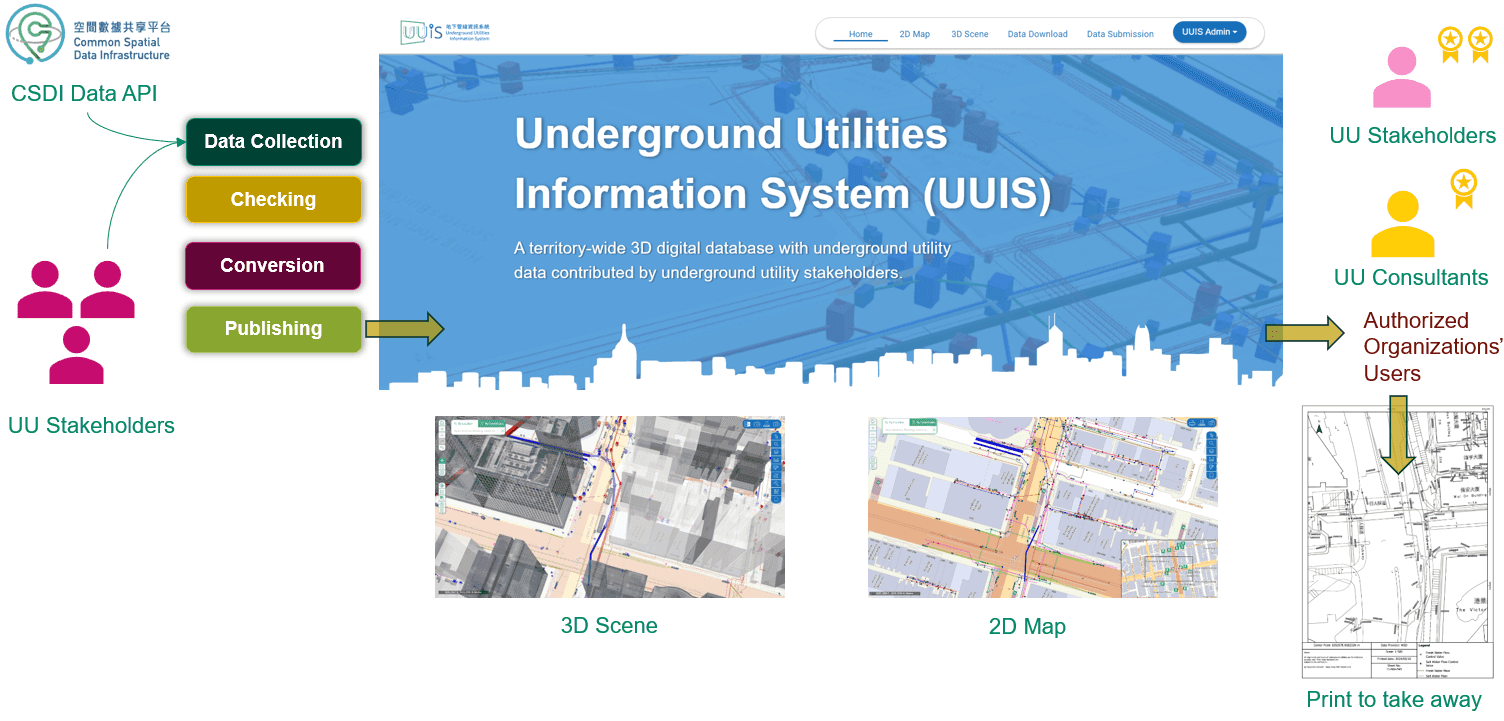
Powerful functionality to optimize UU design
UUIS offers advanced GIS capabilities to support UU data querying and analysis, including spatial search, dynamic measurement, bookmark sharing, and printing tools. Notably, it features three key functions designed to help reduce conflicts, optimize space usage and improve project efficiency:
- Clash Analysis: checks if the proposed utility alignment design clashes with existing assets
- Underground Occupancy Analysis: determines the specific scope of box volume and depth
- Cross Section Analysis: verifies the UU features found through the Ground Penetrating Radar (GPR) B-scan to see if these survey results align with UUIS collected data
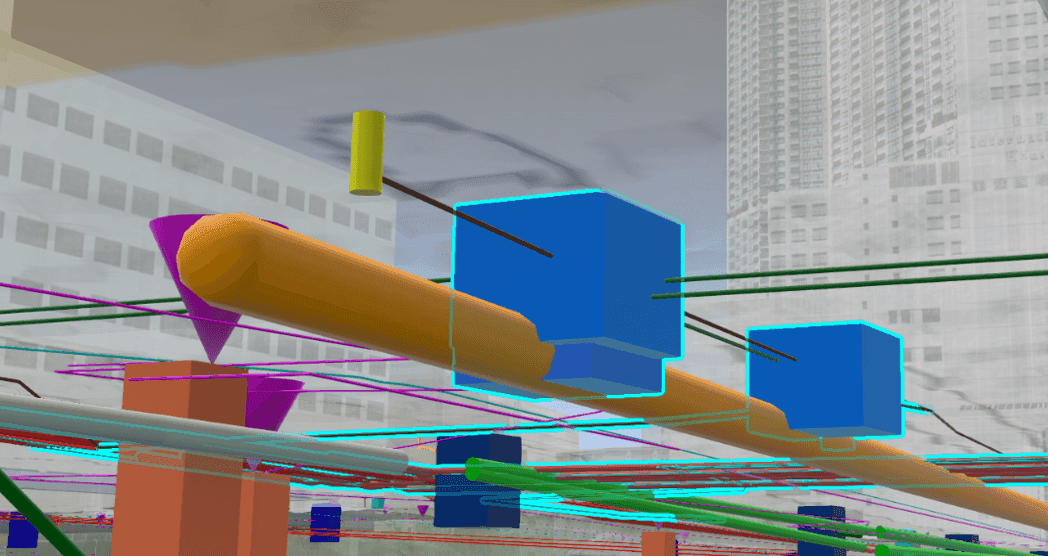
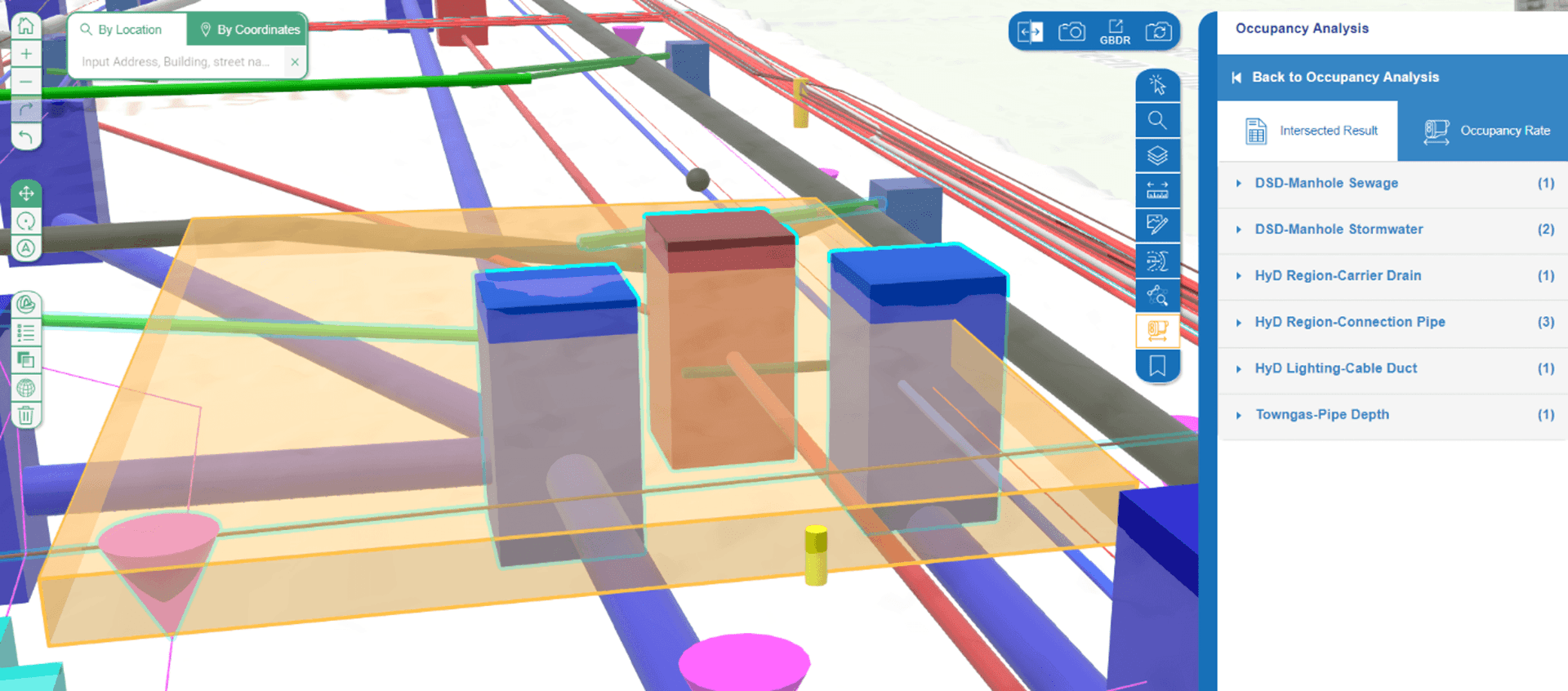
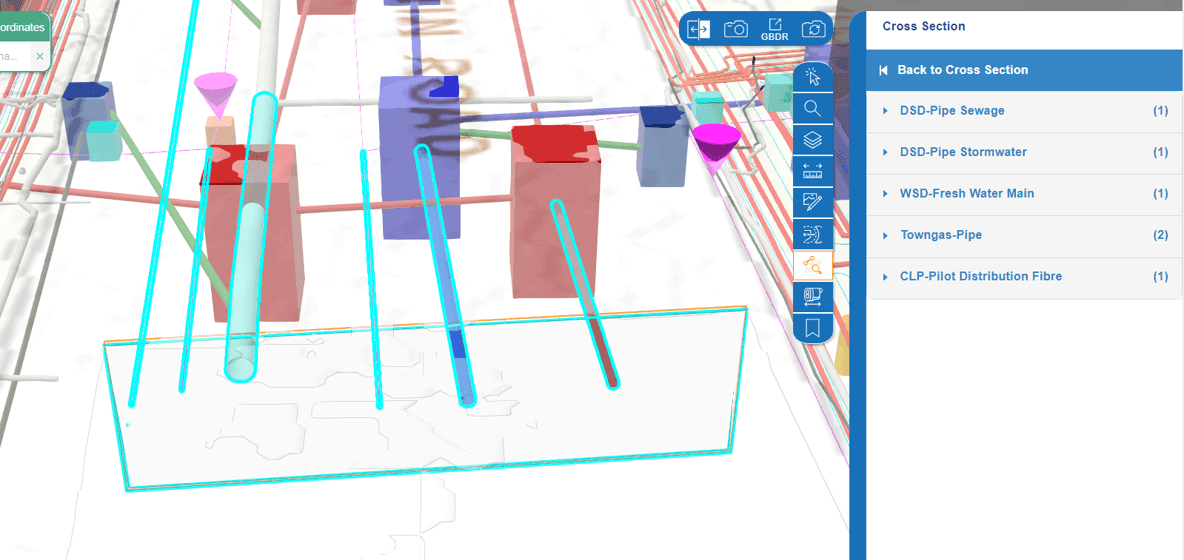
Addressing challenges around data security and quality
While the UUIS empowers stakeholders through informed decision-making and more effective collaboration during project planning, AECOM had to overcome several challenges to maximize the potential of the platform’s digital technologies and advanced analytics:
• Data governance and security In Hong Kong, UU are managed by government departments, public utilities, and private entities. While utility data can be requested for construction planning, private companies are often reluctant to share due to competitive concerns and lack of regulation, while government bodies worry about potential misuse of sensitive infrastructure data. To address these concerns, UUIS enforces strict access controls by limiting data access to defined project areas and deactivating user accounts after project completion. This strikes a balance between data security and practical usability.
• Inconsistent data formats and quality UU data in Hong Kong varies in both format and level of detail, with many records lacking depth information (Z-values), making 3D modeling difficult. To resolve this, UUIS uses a data conversion engine that standardizes diverse data formats while preserving original attributes for traceability. Missing dimensions are supplemented using standard drawings to estimate general width, length, and height.
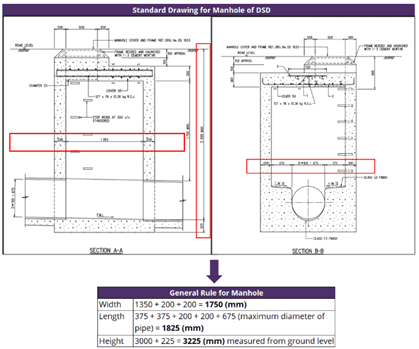
• Survey standards UU data will be used by a wide range of utility stakeholders, including consultants and contractors, so it is critical that standards are set to ensure accuracy and consistency. To address this, AECOM has prepared technical survey specifications to collect the as-built position of the UU after installation. These specifications reference international certified survey methods and provide a robust methodology for delivering more accurate utility surveys in Hong Kong. The technical survey guidelines can also be referenced on the official UUIS site.
Advancing 3D utility mapping for smarter planning The move toward 3D modeling of UU is already delivering tangible benefits in Hong Kong by helping to optimize underground space usage, supporting the expansion of public services and minimizing unnecessary excavation and road disruptions. As UU data becomes more accurate, it will open up new possibilities. For example, remote robotic techniques could be deployed to safely inspect or work in tight underground spaces, closely aligning with Hong Kong’s smart city development.
Major utility undertakings in Hong Kong, such as telecommunications and railway companies, own extensive underground assets, yet their data is only partially integrated into UUIS. Ongoing engagement with these stakeholders is essential to building a more comprehensive 3D utility database. Equally important is increased collaboration among government bodies, professional organizations, and industry players to improve data quality, consistency and standardisation.
Ultimately, the UUIS is more than just the application of digital mapping — it is a vital tool for modern urban planning. By enabling smarter, safer and better coordinated infrastructure development, it equips cities to meet today’s challenges, while paving the way for a more sustainable, efficient, and resilient urban future.
For further information on the UUIS, please refer to: https://www.uuis.gov.hk/